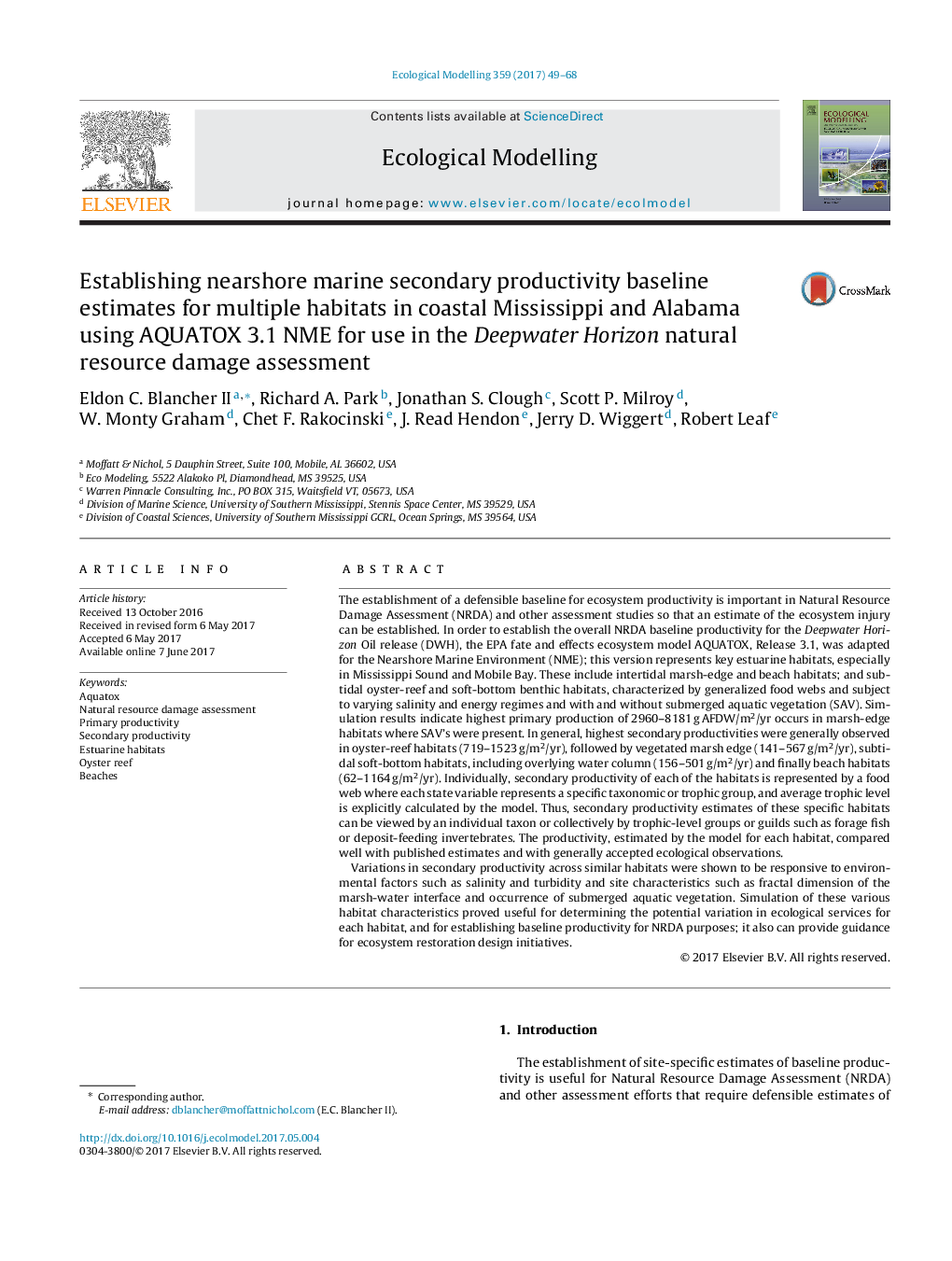| کد مقاله | کد نشریه | سال انتشار | مقاله انگلیسی | نسخه تمام متن |
|---|---|---|---|---|
| 5742120 | 1617388 | 2017 | 20 صفحه PDF | دانلود رایگان |

- AQUATOX was modified to represent 4 major habitat types for Northern Gulf of Mexico including estuarine soft-bottom habitats, oyster-reef habitats, marsh-edge and beach habitats.
- The ecosystem model was calibrated to represent several sub-habitats with different wave energy spectra for beaches, different submerged aquatic vegetation scenarios, and various environmental gradients in oyster reefs.
- Annual primary, secondary and tertiary productivity estimates were calculated for use in Natural Resource Damage Assessments in Mississippi and Alabama.
The establishment of a defensible baseline for ecosystem productivity is important in Natural Resource Damage Assessment (NRDA) and other assessment studies so that an estimate of the ecosystem injury can be established. In order to establish the overall NRDA baseline productivity for the Deepwater Horizon Oil release (DWH), the EPA fate and effects ecosystem model AQUATOX, Release 3.1, was adapted for the Nearshore Marine Environment (NME); this version represents key estuarine habitats, especially in Mississippi Sound and Mobile Bay. These include intertidal marsh-edge and beach habitats; and subtidal oyster-reef and soft-bottom benthic habitats, characterized by generalized food webs and subject to varying salinity and energy regimes and with and without submerged aquatic vegetation (SAV). Simulation results indicate highest primary production of 2960-8181 g AFDW/m2/yr occurs in marsh-edge habitats where SAV's were present. In general, highest secondary productivities were generally observed in oyster-reef habitats (719-1523 g/m2/yr), followed by vegetated marsh edge (141-567 g/m2/yr), subtidal soft-bottom habitats, including overlying water column (156-501 g/m2/yr) and finally beach habitats (62-1164 g/m2/yr). Individually, secondary productivity of each of the habitats is represented by a food web where each state variable represents a specific taxonomic or trophic group, and average trophic level is explicitly calculated by the model. Thus, secondary productivity estimates of these specific habitats can be viewed by an individual taxon or collectively by trophic-level groups or guilds such as forage fish or deposit-feeding invertebrates. The productivity, estimated by the model for each habitat, compared well with published estimates and with generally accepted ecological observations.Variations in secondary productivity across similar habitats were shown to be responsive to environmental factors such as salinity and turbidity and site characteristics such as fractal dimension of the marsh-water interface and occurrence of submerged aquatic vegetation. Simulation of these various habitat characteristics proved useful for determining the potential variation in ecological services for each habitat, and for establishing baseline productivity for NRDA purposes; it also can provide guidance for ecosystem restoration design initiatives.
Journal: Ecological Modelling - Volume 359, 10 September 2017, Pages 49-68